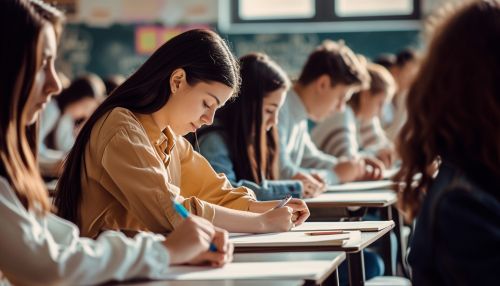Gagne's Nine Events of Instruction
Introduction
Gagne's Nine Events of Instruction is a sequential model of instruction developed by educational psychologist Robert M. Gagne. The model is based on the information processing model of the mental events that occur when adults are presented with various stimuli and is used to design effective teaching and learning environments. The nine events are: gaining attention, informing learners of the objectives, stimulating recall of prior learning, presenting the stimulus, providing learning guidance, eliciting performance, providing feedback, assessing performance, and enhancing retention and transfer.
Gaining Attention
The first event in Gagne's model is gaining attention. This step involves capturing the learners' attention to prepare them for learning. This can be achieved through various methods such as using an interesting problem or situation, a surprising fact or statistic, or a provocative question. The goal is to stimulate interest and curiosity, setting the stage for the learning process.


Informing Learners of the Objectives
The second event is informing learners of the objectives. This involves clearly stating what the learners will be able to do by the end of the lesson. By providing clear and measurable objectives, learners can understand what is expected of them and what they need to achieve. This also helps in focusing the learners' attention on the key elements of the lesson.
Stimulating Recall of Prior Learning
The third event is stimulating recall of prior learning. This involves activating the learners' existing knowledge that is relevant to the new information. By connecting new information to prior knowledge, learners can build a stronger understanding and retention of the new material. This can be achieved through various methods such as asking questions, discussing related experiences, or reviewing previous lessons.
Presenting the Stimulus
The fourth event is presenting the stimulus. This involves presenting the new information or skills to the learners. The information should be organized and structured in a way that is easy for the learners to understand. This can be achieved through various methods such as lectures, demonstrations, readings, or multimedia presentations.


Providing Learning Guidance
The fifth event is providing learning guidance. This involves providing additional resources or strategies to assist the learners in understanding the new information. This can be achieved through various methods such as providing examples, analogies, mnemonics, or guided practice.
Eliciting Performance
The sixth event is eliciting performance. This involves having the learners practice the new skills or apply the new knowledge. By practicing and applying what they have learned, learners can reinforce their understanding and improve their skills. This can be achieved through various methods such as exercises, problem-solving activities, or simulations.
Providing Feedback
The seventh event is providing feedback. This involves giving learners information about their performance. Feedback should be specific, timely, and constructive, helping learners to understand their strengths and areas for improvement. This can be achieved through various methods such as comments, grades, or discussions.
Assessing Performance
The eighth event is assessing performance. This involves evaluating the learners' mastery of the new skills or knowledge. Assessment should be based on the objectives stated at the beginning of the lesson. This can be achieved through various methods such as tests, quizzes, projects, or observations.


Enhancing Retention and Transfer
The final event is enhancing retention and transfer. This involves helping learners to remember the new information and apply it to different contexts. By reinforcing the new skills or knowledge and showing how they can be used in various situations, learners can improve their retention and transfer of the new material. This can be achieved through various methods such as reviews, discussions, or real-world applications.
Conclusion
Gagne's Nine Events of Instruction provide a systematic approach to designing effective learning environments. By following these nine steps, educators can ensure that their lessons are engaging, relevant, and effective in promoting learning and retention.
